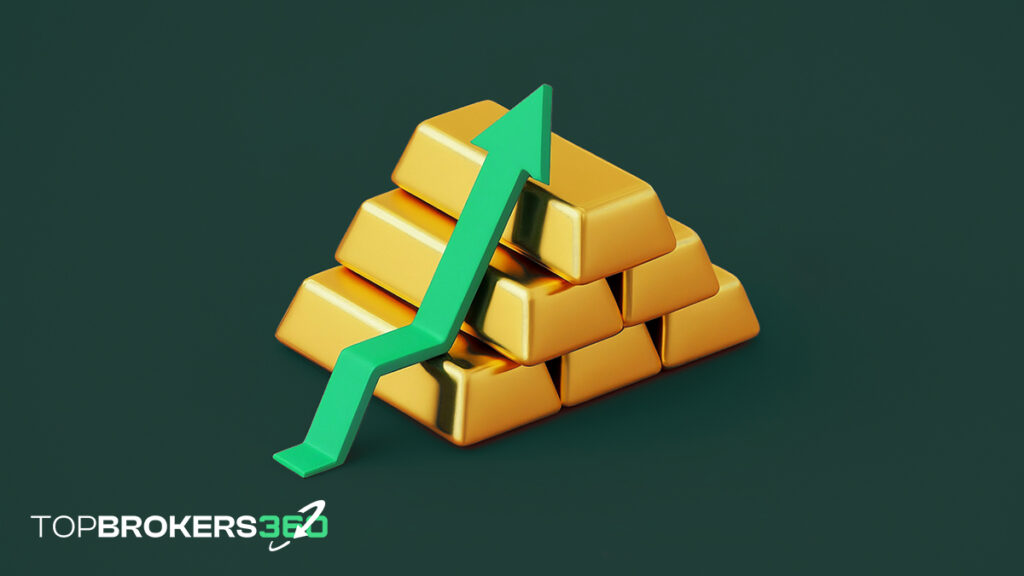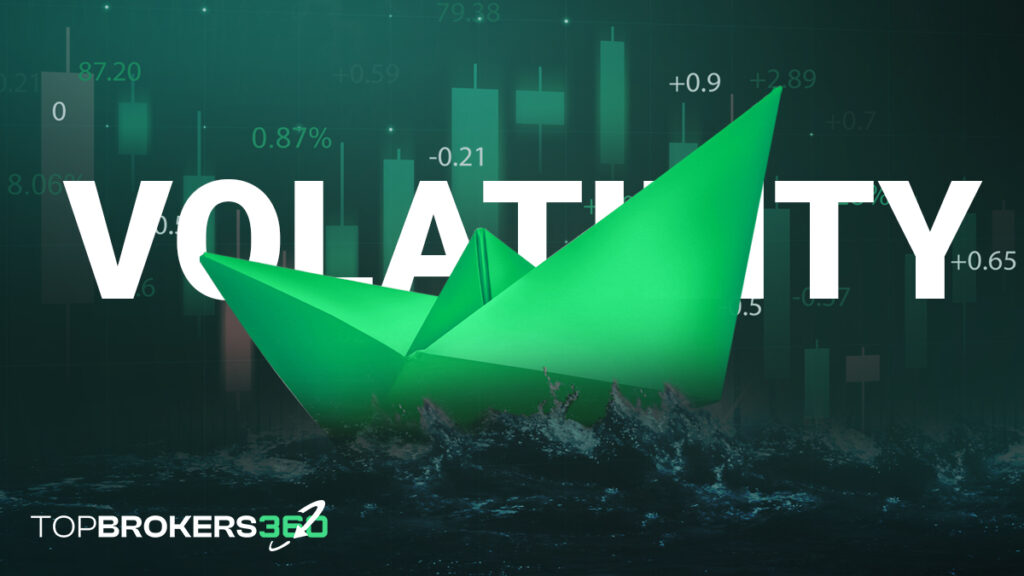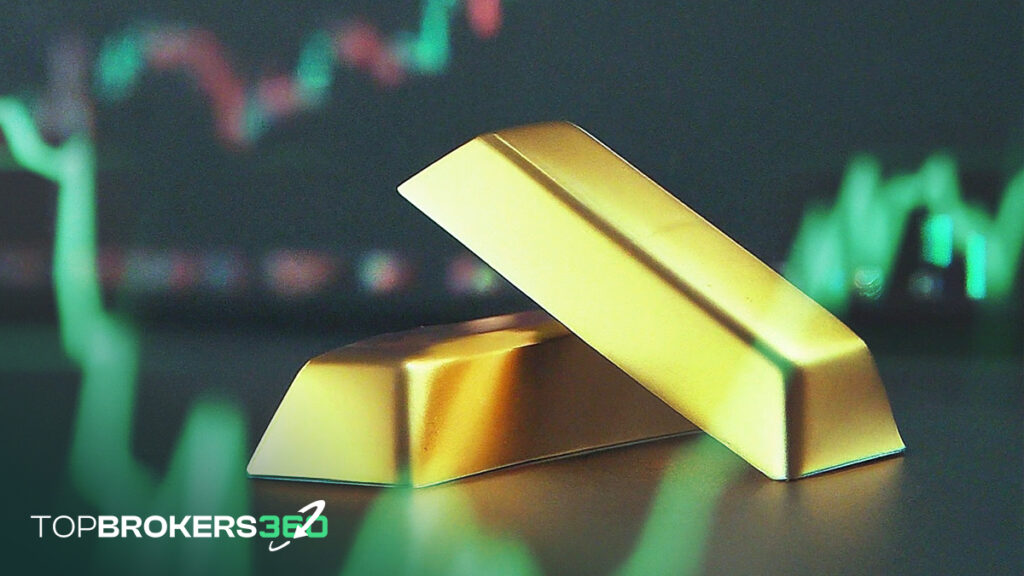Gold prices are catching the interest of investors and experts all over the world. With the economy changing and new policies being introduced, it’s becoming increasingly important to understand what affects gold prices. A key factor to watch is the possibility of the Federal Reserve (Fed) lowering interest rates.
The Fed, led by Jerome Powell, has a big influence on U.S. financial policies and the overall mood in global markets. What the Fed decides can greatly affect many economic aspects and investments, especially gold.
“Certainly, we’re encouraged by the progress but we’re not declaring victory at this point.” – Jerome Powell, Federal Reserve Chair
By understanding the impact of Federal Reserve policies and economic shifts on gold prices, you can make more informed decisions in your trading activities. For those looking to learn more about gold market trends, TopBrokers360 is a reliable resource for trading education and expert reviews. You can find more information in our Guides or check out reviews of top brokers to stay up-to-date and make informed investment decisions.

Factors Influencing Gold Prices
The opinions of Jerome Powell, the head of the Federal Reserve, strongly affect gold prices. His recent public statements have caused big changes in how investors feel and how much they think gold is worth.
Impact of Jerome Powell's Comments
Jerome Powell, in a press conference on Wednesday, 31 January, addressed expectations for a March rate cut, stating it’s “probably not the most likely case or what we’d call the base case.” He clarified the Fed’s stance, saying they’re not just waiting for “better data” but need “more good data” and a “continuation of the data we have been seeing.” Powell recognized the decline in inflation but emphasized the need for “more evidence that confirms what we think we’re seeing.”
Market Reaction to Rate Cut Speculation
There’s been a lot of talk about whether the Fed will lower interest rates in March. Powell’s comments, which showed a cautious stance on immediate rate cuts, have changed what people expect to happen. Normally, lower interest rates make gold more attractive, but the Fed’s current caution adds uncertainty. Investors should watch economic signs and Fed decisions closely.
Historical Trends and Recent Developments
Knowing the historical context and recent developments is key to understanding the current dynamics of gold prices.
Record Highs in Late 2023
Late 2023 Surge: In late 2023, gold prices soared to new highs, driven by interest rate speculations and increased global market instability. These conditions made gold a preferred choice for investors looking for safe options during uncertain times.
Contributing Factors
Interest Rate Expectations: Predictions about the Federal Reserve’s actions, especially regarding interest rate cuts, have always impacted gold prices. When lower rates are expected, gold becomes more appealing because it does better than investments that depend on interest yields.
Global Volatility: Worldwide political tensions and economic uncertainties push gold prices up. When the world feels unstable, and markets are unpredictable, investors often turn to gold as a safe haven.
Central Banks' Role
Significant Buyers: Central banks across the globe are key players in the gold market, buying large amounts of gold. They do this to diversify their reserves and protect against currency and economic shifts. Their ongoing demand helps keep gold prices stable and on an upward path.
For traders, global volatility means more chances to profit in the market, both when prices go up and down. The unpredictable nature of global events can lead to quick changes in gold prices, offering opportunities for keen investors to capitalize on these movements.

Outlook and Considerations
As we look forward to the future of gold prices, several factors come into play. Understanding these can help investors make informed decisions:
Probability of Fed Interest Rate Cuts in March
Impact on Gold Prices: There’s a growing belief that the Federal Reserve might not lower interest rates in March. Such actions by the Fed directly affect gold prices. If rate cuts come later or are smaller than expected, gold’s recent price increase might slow down as investors adjust their strategies.
Worldwide Economic and Political Concerns
Justification for Gold Exposure: Despite the uncertainty surrounding Fed policy, the ongoing global economic and political issues still support investing in gold. Gold is known for holding its value or even gaining value during tough economic and political times, serving as protection against market swings.
Gold Prices in 2024
Current Trends: After reaching record highs in late 2023, gold prices have seen a decline in early 2024, following a significant year-end rally. However, they remain at relatively elevated levels compared to historical standards. This shows that despite a slowdown in the surge, there’s strong support for gold prices, influenced by various economic signals and market opinions.

What to Know Before Trading Gold
- Federal Reserve decisions significantly affect gold prices.
- Central bank purchases greatly influence gold's market value.
- Global unrest and economic uncertainties enhance gold's appeal.
- Gold's stability and reliability make it an attractive investment.
The influence of Federal Reserve Chair Jerome Powell’s statements, central banks’ purchasing activities, and the effects of global geopolitical and economic risks are crucial in the gold market. With the Federal Reserve’s future interest rate decisions on the horizon, the importance of closely watching economic indicators and global news cannot be overstated.
Gold’s value remained high into 2024 after a notable increase in late 2023, underlining its role as a reliable asset during uncertain times. Traders should consider several factors—like possible Federal Reserve rate adjustments, worldwide uncertainties, and market trends—to make well-informed choices.
As we look ahead, it’s evident that gold’s value will be shaped by various complex factors. Traders need to stay informed and flexible, adjusting their strategies as global economic conditions change.
As you navigate the complexities of the gold market, remember that informed decisions are key to reaching your investment goals. Stay informed about insights, expert analyses, and up-to-date reviews of top brokers in 2024.
Additional Insights
What factors are driving the surge in gold prices?
The recent surge in gold prices is primarily driven by expectations of a potential Federal Reserve rate cut, geopolitical instability, and global market uncertainty. Additionally, record highs in late 2023 were influenced by central banks buying gold as part of their reserve diversification strategy.
How are gold prices influenced by the possibility of a Fed rate cut?
Gold prices are sensitive to Fed rate cuts. Lower interest rates decrease the opportunity cost of holding non-yielding assets like gold. The speculation of a Fed rate cut, therefore, tends to increase the attractiveness of gold as an investment.
What impact do geopolitical tensions have on gold prices?
Geopolitical tensions often lead to increased market volatility and uncertainty, prompting investors to seek safe-haven assets like gold. This increased demand typically drives up gold prices.
How can investors take advantage of the current gold market?
Investors can take advantage of the current gold market by considering gold as a part of their diversified investment portfolio, especially as a hedge against inflation and currency fluctuations. They should also stay informed about global economic indicators and central bank policies.
What are the key economic indicators to monitor when analyzing gold prices?
Key economic indicators to monitor include Federal Reserve interest rate decisions, inflation rates, the U.S. dollar performance, and global geopolitical developments. Additionally, trends in central bank gold purchases can be influential.
How does the performance of the U.S. dollar affect gold prices?
Gold prices typically have an inverse relationship with the U.S. dollar. A stronger dollar makes gold more expensive for holders of other currencies, potentially lowering demand and gold prices. Conversely, a weaker dollar can boost gold prices.
Are there any risks associated with investing in gold during uncertain times?
While gold is considered a safe haven, it’s not without risks. These include price volatility, liquidity issues, and the possibility of not yielding returns comparable to other investments in a bullish stock market.
What are the long-term trends for gold prices and how can investors navigate them?
Long-term trends for gold prices have generally been upward, particularly during times of economic uncertainty. Investors should navigate these trends by considering gold as part of a long-term diversified investment strategy and staying informed about global economic conditions.
How does gold serve as a hedge against inflation and currency fluctuations?
Gold serves as a hedge against inflation and currency fluctuations because it typically retains its value over time. As inflation erodes the value of paper currencies, gold prices often rise, providing a stable investment option.
What are the potential implications of gold price movements on the global economy?
Movements in gold prices can signal broader economic trends and investor sentiment. Rising gold prices often indicate economic uncertainty or inflation fears, while falling prices can suggest investor confidence in other assets or economic stability.
➟ Interested in trading gold? Take a look at our Top Brokers for more insights, expert analyses, and the latest broker reviews.
